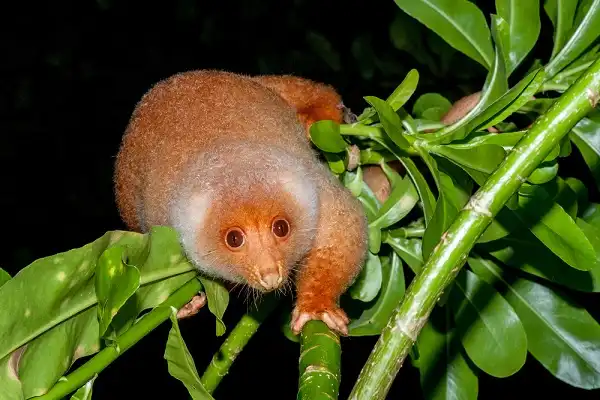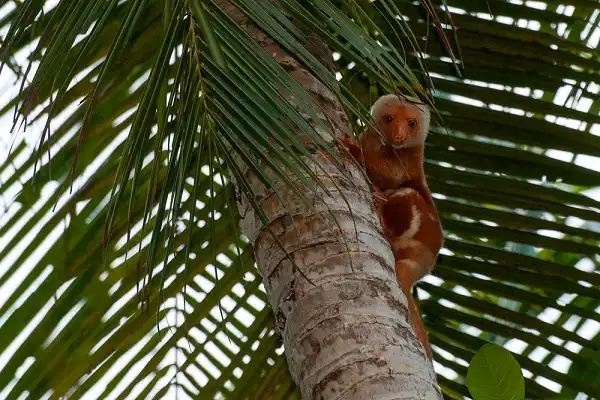The cuscus is a small, marsupial creature found in the forests of Papua New Guinea and Australia. Despite its small size, the cuscus is a powerful animal that can climb trees easily and fend off predators. This makes the cuscus an interesting subject for study, and researchers are still learning new things about this unique creature. In this blog post, we will take a closer look at the cuscus and its unique features. We will also discuss some of the ways in which this little creature is adapting to changing environmental conditions.

Cuscus Description
Cuscus are a family of marsupials that are found in the forests of Indonesia, Papua New Guinea, and parts of Australia. They are arboreal animals, meaning that they spend most of their time in trees. Cuscus have thick fur that helps to keep them warm in the cold mountain climates where they live. They also have long tails that they use for balance when they are climbing. Cuscus are nocturnal animals, and they eat leaves, fruit, and insects. Cuscus are hunted by humans for their fur, and they are also considered to be a delicacy in some cultures. As a result, cuscus are considered to be endangered animals.
Cuscus Habitat
The cuscus spends most of its time lounging among the treetops, where it has developed an intricate relationship with its habitat over the years. Cuscus habitat is primarily composed of dense, tangled vines and leaves that protect the animal from both predators and environmental fluctuations. The deep canopies of the trees also provide ample shade and warmth, while allowing rainwater to collect in shallow pools on the forest floor. Cuscus are extremely well adapted to their environment, using long claws and thick fur to grip onto tree branches, as well as night vision to help them find food at night. Overall, this unique creature continues to thrive in one of the most diverse ecosystems in the world thanks to its sophisticated relationship with its native habitat.
Cuscus Diet
Cuscuses are arboreal animals that subsist primarily on a diet of leaves, fruits, and small invertebrates. Cuscuses have exceptionally strong jaws and a specialized digestive system that allows them to efficiently extract nutrients from plant matter. They are known for their long claws, which help them to forage for insects as well as to navigate through the tree canopy. Cuscuses typically spend most of the day resting in nests high up in the treetops, where they are relatively safe from predators. However, when it comes time to search for food, cuscuses descend from their perches and brave the dangers of the forest floor in order to find the nutrients they need to survive. In this way, their diet is essential both for sustaining their robust physiques and for ensuring their survival in the unforgiving rainforest environment.

Cuscus Size
Their size varies significantly across different species, ranging from just a few inches to over one foot in length. Cuscus size tends to be closely linked to the animal’s environment, with individuals in cooler, denser forests being larger than those found in more arid habitats. Interestingly, cuscuses have an unusual adaptation that allows them to adjust their size in order to cope better with changing environmental conditions. This adaptive capacity helps these small creatures to thrive in a wide range of habitats, making them an important part of their native ecosystem. Overall, cuscus size can provide insights into the animals’ ecology and evolution, and is an important factor for understanding their overall biology.
Cuscus Lifespan
Cuscus have a lifespan of 10-15 years in the wild. In captivity, cuscus have been known to live up to 20 years. Cuscus are relatively long-lived animals for their size and are considered to be low maintenance pets. They are popular exotic pets and can adjust to living in a variety of climates.
Cuscus Behavior
Cuscus are solitary animals, meaning they live alone, and have a home range, meaning the area they live in and travel around. Cuscus are gentle animals and have been known to be friendly with humans. Cuscus communicate by making soft calls to each other. Cuscus typically mate for life and have litters of two to four offspring. Cuscus behavior is fascinating to observe, and these unique animals make delightful pets.

Cuscus Speed
Cuscus are known for their ability to move quickly through their environments. This is due, in large part, to their flexible limbs and agile bodies, which allow them to twist and turn through narrow spaces with ease. Moreover, cuscus can reach very high speeds when running or climbing, allowing them to escape from predators or out-compete other animals for resources. By exploiting their speed as a means of adaptation, cuscus have become one of the most successful species in the animal kingdom. Despite this advantage, however, cuscus are still vulnerable to other threats, such as habitat loss and climate change. However, with proper management and conservation efforts focused on preserving their unique features and behaviors, we can help ensure the continued prosperity of these speedy animals for generations to come.
Cuscus Hunting
Cuscus hunting is a highly specialized form of wildlife management that involves using specific techniques to track and capture elusive cuscuses. Cuscuses are nocturnal tree-dwelling animals that have dense fur, large eyes, and long tails. Because of their small stature, camouflage, and well-adapted senses, cuscuses are notoriously difficult to find or capture. To be successful at cuscus hunting, hunters must use a variety of tools and techniques to track these animals as they travel through the forests at night. This can involve using infrared cameras, bait traps, scent lures, or even dogs to follow spoor left by the animals. With careful planning and skillful execution, a skilled hunter can be successful in bringing home the sought-after prize of fresh cuscus meat.

Conclusion
The cuscus is an arboreal marsupial found in the tropical rainforests of New Guinea and some surrounding islands. These animals are herbivores, feeding mostly on leaves, shoots, and fruits from trees and vines. Cuscuses have a number of adaptations that allow them to live in this challenging environment, including strong claws for gripping tree branches, a prehensile tail for grasping objects, and sensitive whiskers that help them navigate in the dark. Although they are not currently threatened with extinction, loss of habitat could one day lead to problems for these interesting creatures.
Frequently Asked Question


